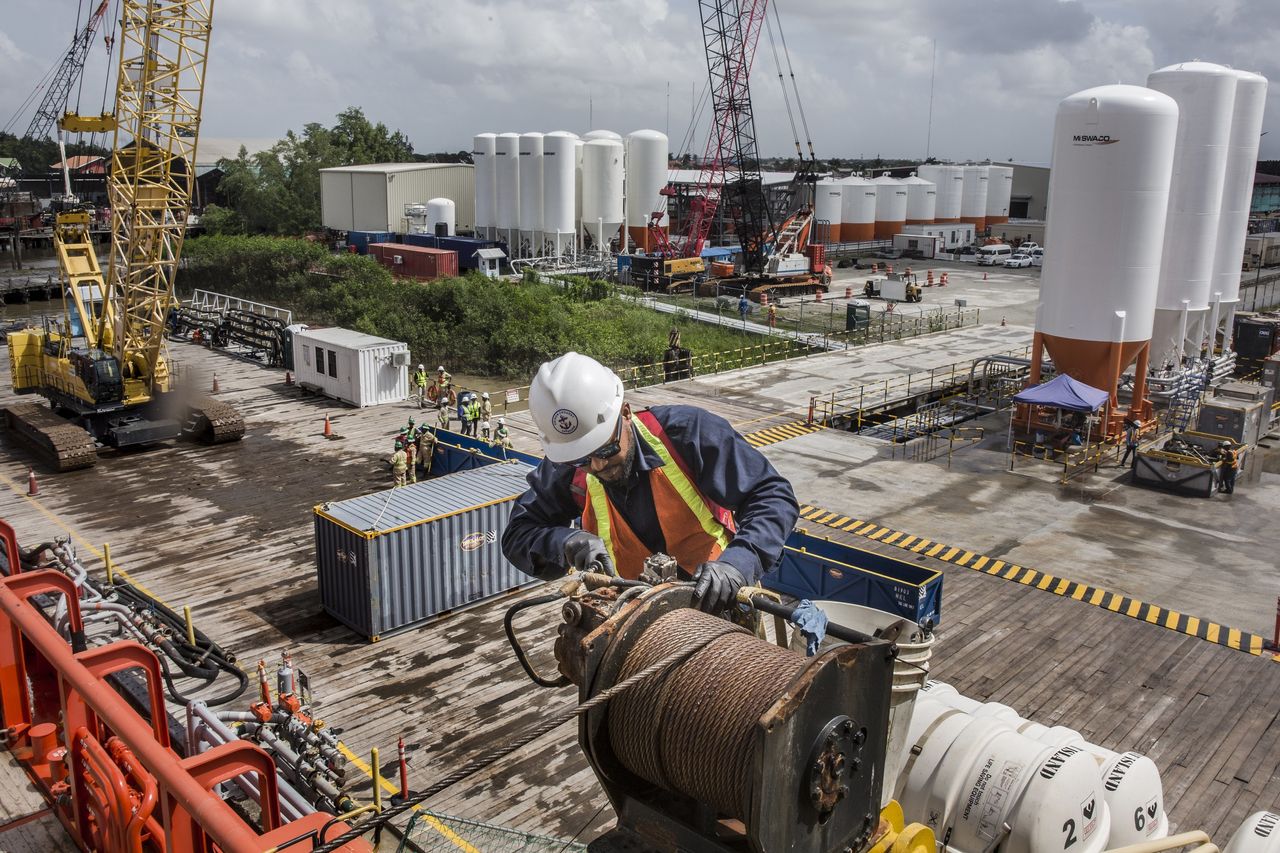What Everyone—Except the US—Has Learned About Immigration
Washington remains divided over allowing more foreign workers while global rivals lower barriers to ease persistent labour shortages
Migration to affluent countries is at record highs, and some nations short of workers are overcoming political opposition to open their borders even wider, hoping to fill jobs and ease inflation.
Government actions to attract foreign nationals for skilled and unskilled jobs have spread from Germany to Japan and include countries with longtime immigration restrictions and some with a populist antipathy to streams of foreign workers.
The U.S. remains an outlier. Hundreds of thousands of migrant workers have arrived through back channels, but the country isn’t openly welcoming more legal workers, despite the tight labor market. That hesitancy carries economic costs, including persistent worker shortages and wage inflation, according to economists and some U.S. officials.
Unemployment is at a record low 4.8% across the 38 largely affluent countries that make up the Organization for Economic Cooperation and Development. These and other nations report a long list of open positions from truck drivers to baggage handlers to miners.
Beyond being needed to fill pandemic-driven labor shortages, migrant workers are in demand to fill the gap left by retiring baby boomers and declining populations, economists and Western officials say. “The labor forces of richer countries are hollowing out,” said Michael A. Clemens, an economics professor at George Mason University.
Governments across affluent countries are balancing the economic need for more workers with the political reality that very few electorates are enthusiastic about high levels of immigration.
In Europe and North America, the working-age population is expected to decline from 730 million to 680 million over the next two decades, according to United Nations estimates. Such places as South Korea and Taiwan stand to lose more than half their workforce over the coming decades. The working-age population in sub-Saharan Africa, meanwhile, will increase by 700 million by 2050, according to U.N. projections; in Latin America and the Caribbean, the U.N. estimated an increase of 40 million by midcentury.
For many wealthier countries, labor surpluses abroad are hard to resist. The global labor imbalance, in effect, is driving foreign workers into the open arms of nations that need them.
Around five million more people moved to affluent countries last year than left them, up 80% from pre pandemic levels, according to a Wall Street Journal data analysis. The Journal examined 10 countries that received most of the migration, including the U.S., Germany, the U.K., Canada, Australia and Spain. Migration experts say it is the highest number ever reported. That total includes about two million refugees from Ukraine. Even excluding that surge, net migration was significantly higher than 2019 levels, according to the data.
Germany is rewriting immigration laws to bring in more college graduates as well as blue-collar workers under a new points-based system. Points will be awarded based on age—younger people receive more—educational qualifications, work experience and German-language competency. Canada announced plans late last year to take in nearly 1.5 million more migrants by 2025. Western Australia recently sent a delegation to the U.K. and Ireland to recruit tens of thousands of workers, including police, mechanics and plumbers.
South Korea plans to admit 110,000 low-skill foreign workers this year to work in industries such as farming and manufacturing, up nearly 60% from last year’s quota. Japan, which is opening new visa paths for high-skilled foreign workers, announced in April plans to offer blue-collar workers—including those at factories and farms—a chance to extend their stay and even bring their families. Both countries have been longtime skeptics of immigration.
Spain amended its laws last year to allow more foreign workers from outside the European Union to fill blue-collar jobs left open by a shrinking working-age population. José Luis Escrivá Belmonte, Spain’s minister of inclusion, social security and migration, estimated that his country will need to add 300,000 foreign workers a year to keep the economy running and support the national pension system.
Spain’s unemployment rate is 13% and has been around that level or higher for 15 years. Mr. Escrivá said unemployed Spaniards tended to be age 50 or older and not necessarily suited to fill open jobs needed in sectors such as agriculture, construction or film production.
José Antonio Moreno Díaz, an official at Spain’s Trade Union Confederation of Workers’ Commissions, which represents over a million workers, including migrants, said training opportunities for higher-paying jobs should be offered to citizens. “We are not against bringing in real needed foreign workers,” he said. “But let’s pay attention to unemployed people in the Spanish labor market.”
Opponents in various countries warn of citizens losing jobs to outsiders willing to work for less money. Some say the cost of providing newcomers with healthcare, education and other public services outweighs the economic benefits, especially for low-skill workers who pay little in taxes.
Others argue that such immigration is a quick fix that slows economies in the long term.
“Labor shortages are very healthy,” said Mikal Skuterud, an economics professor at University of Waterloo in Ontario, Canada. “They force employers to use existing workers more efficiently and invest in technology, that’s all good stuff.”
Finland and Greece are building hundreds of miles of new land barriers to prevent illegal migrant crossings. In Italy and Sweden, voters recently elected governments with a more restrictive approach to immigration, and both are planning reforms to slow both legal and illegal migrant arrivals.
More jobs, higher pay
The U.S. hasn’t made any significant immigration reforms in 33 years, and the last serious attempt in Congress dates back a decade or more. Few issues are so politically divisive in Washington, making any chance of a policy overhaul seem unlikely, according to immigration experts.
Despite restrictive immigration policies, migrants seeking work in the U.S. are finding jobs more quickly and at higher pay than at any time in recent memory. Tens of thousands of people crossed into the U.S. from Mexico illegally and were arrested over the past 10 days, while some 20,000 were detected by various forms of surveillance but not caught, the U.S. Border Patrol chief wrote on Twitter.
In the U.S., the limit on H-1B visas available for highly skilled workers has changed little since 1990. Presidential administrations over the past 15 years have clamped down on illegal border crossings without creating new legal immigration pathways, prompting more urgent discussions about immigration policy and the labor shortage, said Giovanni Peri, chairman of the economics department at the University of California, Davis where he directs the Global Migration Center, whose recent research favours more immigration.
U.S. Border Patrol agents made a record 2.2 million arrests along the Mexican border in the 2022 fiscal year, up from 1.65 million arrests in 2021. The migrant crossings were driven, in part, “because the U.S. economy is screaming out for their labor,” said Mr. Clemens, the economist.
New channels have recently opened. More than 300,000 Ukrainian refugees entered the U.S. since Russia invaded Ukraine last year, many through a Biden administration program called Uniting for Ukraine. That number is more than the total number of refugees admitted into the U.S. through legal channels over the previous seven years. In North Dakota, energy companies are tapping Ukrainians to fill jobs in the Bakken oil fields.
Around 450,000 migrant refugee workers—largely from Afghanistan, Ukraine, and Latin America—entered the U.S. legally in 2021 and 2022 and are working under temporary government protections in industries with labor shortages, according to an April report by FWD.us, a pro-immigration think tank. Those workers are estimated to have filled about a quarter of total job openings this year in such industries as construction, food services and manufacturing, the report said.
The labor shortage is pushing inflation in affluent countries where employers, competing for workers, are raising wages to hire and keep them. “I do think more migrant workers would reduce the inflation rate,” said Spencer Cox, the Republican governor of Utah, which has a 2.4% unemployment rate, slimmer than even the U.S. rate of 3.4%.
Gov. Cox and Republican Gov. Eric Holcomb of Indiana, which is also short of workers, want to rally other governors in a long-shot proposal for Congress to give states a measure of authority over legal immigration.
The U.S. and other countries are divided about how to limit illegal immigration while keeping a pathway for a flow of potential employees for various industries. A plurality of Americans think the U.S. should admit fewer migrants, according to recent Gallup polls.
To gather bipartisan support for increased legal immigration, especially for skilled workers, Utah Gov. Cox said the government needs to demonstrate better control over the U.S.-Mexico border. “Scenes of tens of thousands of migrants streaming across the border in a way that could threaten national security,” he said, “make it harder to have that higher-level conversation.”
Learning the ropes
Mathias Senn, a butcher in Germany’s wealthy Black Forest region, posted job ads in newspapers and online, seeking to replace four of 10 employees who were preparing to retire. “There were no interested people,” he said. “Nothing at all.”
Last year, Mr. Senn hired an apprentice from India, taking advantage of a new law that allowed businesses to hire unskilled people from outside the EU. Local business associations are helping hundreds more workers arrive from India. India’s unemployment rate is around 8%, compared with about 3% in Germany.
Mr. Senn’s 22-year-old apprentice, Rajakumar Bheemappa Lamani, makes about 940 euros a month, around $1,020, while learning the ropes. Mr. Lamani said it was difficult to save money because of the high cost of living, but he hoped to stay.

Germany needs to add around half a million immigrants a year in the next decades as the baby boomer era draws to a close, said Herbert Brücker, head of migration research at the Institute for Employment Research, a federal agency. “We have in Germany about two million vacancies, an absolute peak historically,” he said.
Young people in Germany aren’t interested in manual work, said Joachim Lederer, a butcher in Weil am Rhein, a town of 30,000 by Germany’s borders with France and Switzerland. His son, who studied and worked at the University of California, Berkeley, and Cornell, is a professor of mathematical statistics.
Mr. Lederer recently hired an apprentice from India who had studied computer science, and he has anointed a young Italian immigrant to take over the butcher shop when the time comes.
The U.K. added a record half-million new migrants in the year ended June 2022, even after exiting the EU, which made it more difficult for EU citizens to obtain visas.
Alan Manning, former chair of the U.K. Migration Advisory Committee, which consults government officials on immigration policy, said people accepted the idea of allowing foreign workers if their skills are needed. But some “get anxious about immigration when they perceive it to be out of control,” he said.
Amjed Nizam, a Sri Lankan design engineer trained in Hong Kong, looked for an exit overseas when Sri Lanka’s economy imploded last year. The 29-year-old discovered a new U.K. program that grants two-year work visas to recent graduates of top universities, even without a job offer.
U.K. authorities approved Mr. Nizam’s online application within three weeks, he said. He arrived late last year, found a job with a broadcasting company and now lives in London with his wife and daughter.
Paul Papalia, a government minister in Western Australia, said the region desperately needs workers in both public and private sectors to serve the mining industry, which is booming from global demand for battery-powered vehicles that rely on locally mined lithium, cobalt and nickel.
Mr. Papalia led a delegation in March to pubs and other spots in the U.K. to try to lure as many as 30,000 British workers with the prospect of better salaries and sunny weather. Nearly 70,000 job seekers expressed interest so far, including 1,100 applications to join the police force, he said.
Only about a fifth of Australians supported more immigration, according to a poll last year by the Lowy Institute, a nonpartisan think tank in Sydney. Mr. Papalia said voters in his state nonetheless support his recruitment efforts. “They ask, ‘Where are the people who are going to help us build our house?’ ”
 Copyright 2020, Dow Jones & Company, Inc. All Rights Reserved Worldwide. LEARN MORE
Copyright 2020, Dow Jones & Company, Inc. All Rights Reserved Worldwide. LEARN MORE
This stylish family home combines a classic palette and finishes with a flexible floorplan
Just 55 minutes from Sydney, make this your creative getaway located in the majestic Hawkesbury region.
U.K.-listed mining giant’s chairman says the proposal undervalues the company
LONDON— Anglo American on Friday rejected a $39 billion takeover proposal from rival BHP, saying the bid “significantly undervalues” the company and setting the stage for a potential bidding war.
London-listed Anglo American said the unsolicited proposal, which was made earlier this month and which became public this week, features an unattractive structure that is too uncertain and complex .
Anglo American Chairman Stuart Chambers said the company stands to benefit from its portfolio of assets, including copper, that are likely to experience growth from trends around the energy transition. BHP’s bid, Chambers said, is opportunistic and dilutive for shareholders.
BHP’s all-share offer valued Anglo American at about $38.8 billion, and would have been contingent upon Anglo American spinning off shareholdings in two South African-listed units. The proposal represented a premium of about 31%, not including the South African-listed units, based on Tuesday’s closing prices.
Some analysts had predicted Anglo would find the bid too low and are expecting BHP to return with another. BHP has until May 22 to make a firm offer, though the deadline can be extended. Industry participants expect other large miners to also take a run at Anglo, whose share price has dropped since 2022 as lower commodity prices have ripped through the industry.
A tie-up between BHP and Anglo American, which would be the largest mining deal on record, would illustrate the growing importance of copper, a metal essential to clean-energy products , to a sector that has long relied on Chinese industrialisation to boost profits.
Copper represents some 30% of Anglo American’s output, while BHP counts a majority stake in Chile’s Escondida, the world’s biggest copper mine, among its assets. BHP bought Australian copper-and-gold miner Oz Minerals for $6.34 billion in May last year, representing its biggest acquisition since 2011.
Copper prices are up some 15% so far this year, reflecting expectations that demand for the metal will rise as the world decarbonises and supply will be constrained. Electric vehicles and wind farms use copper in much greater quantities than gasoline-powered cars and coal-fired power stations.
Anglo American has been reviewing its assets in recent months, and has held early conversations with potential buyers for its storied De Beers diamond unit, which it values at more than $7 billion, The Wall Street Journal reported Thursday.
Activist firm Elliott Investment Management holds a stake in Anglo American worth roughly $1 billion, accumulated over several months and before BHP’s move on the miner, according to a person familiar with the matter. The firm is widely known for its campaigns to push companies for change to boost their stock prices. Its view of the Anglo American holding couldn’t be learned.
That said, a jump in Anglo American’s share price following BHP’s takeover offer indicates Elliott has already profited from its holding, potentially reducing any incentive for it to take any action until the outcome of BHP’s bid becomes clearer.
Anglo’s stock on Friday traded above the implied value of BHP’s offer, indicating the market expects a higher bid to emerge.
Consumers are going to gravitate toward applications powered by the buzzy new technology, analyst Michael Wolf predicts
Just 55 minutes from Sydney, make this your creative getaway located in the majestic Hawkesbury region.























